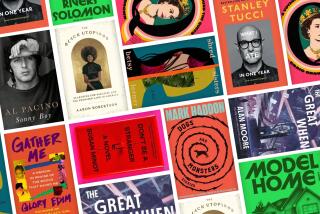Michelle Dean loves Ursula K. Le Guin’s cat stories. Which is a good start.
Is it an insult to Ursula K. Le Guin’s voluminous and varied body of work, or does it malign her stature as a public intellectual, if I admit that among my favorite things she has written are her stories about cats? Currently, she has just one, a black and white specimen she called Pard. This is short for Gattopardo, Italian for leopard, though Pard does not seem to have Big Cat ambitions. In the photographs Le Guin periodically shares of Pard on her blog, he looks pretty satisfied with the status of house cat.
His only vice, as she records in a series of blog posts called “The Annals of Pard,” is that he likes to get up on the mantle and knock off the kachina dolls she keeps there, all of which are breakable. The catch is that he likes to do this only while Le Guin is not in the room. Without her there, “[t]his little cat so deeply shaped by human expectation, the tamest cat I ever had, has a flame of absolute, wilfull wildness,” she marvels in her blog, putting her finger on exactly the thing that ties cat owner to cat: the irreconcilable contradictions of the feline personality.
By the way, you read that right. I learned about Pard not from Le Guin’s traditionally published writings, from her dystopian fiction or her essays, but rather from her blog. Though that continually updated document has never had a title fancier than “Ursula K. Le Guin’s Blog,” she claims she dislikes the word, which sounds to her like “a sodden tree trunk in a bog, or maybe an obstruction in the nasal passage.” But the activity itself clearly pleases her, and that pleasure seeps through best when contributing more cat-matter to the internet. And now you may read some of that cat-matter on paper, as it has been collected by Le Guin’s publisher in a book called “No Time to Spare: Thinking About What Matters.”
That the musings here feel remarkably long for the internet just go to show us...how little space, on the internet, we give to “thinking about what matters.”
That Adrienne-Rich-ish title points up the non-feline contents of the book, most of which are nascent polemics, positions Le Guin still doesn’t seem finished formulating. Le Guin, of course, is a formidable polemicist. Anyone who might not have known that already learned it when, in 2014, she received the Medal for Distinguished Contribution to American Letters from the National Book Foundation. From the pedestal she chided many of the banquet-fattened publishing executives sitting before her. “Books, you know, they’re not just commodities,” she said. “The profit motive often is in conflict with the aims of art.”
Here we get some thoughts on publishing too, or rather, as the book calls it, “The Lit Biz.” Posts on this theme include a lament about how often people ask her “why” she writes — she calls this question “highly metaphysical.” It also includes Le Guin’s frustration with the notion that someone, somewhere has written the Great American Novel. But that argument gradually morphs into a paean to John Steinbeck’s “The Grapes of Wrath,” the novel Le Guin evidently feels might be closest to a Great American novel. And then also segues, in a pleasingly bloggy way, into an anecdote about how Le Guin actually knew Steinbeck in her youth and hid with him in the bushes at a terrible wedding with racist guests. “We need to get away from boring people and drink in peace,” she records Steinbeck saying on this occasion. Amen, Great American Writer.
But the dominant theme, beyond cats and books, is worry. Worry about a ruined environment and worry about the vagueness of the modern obsession with the “inner child” and a worry about the proper uses of anger. “I find the subject very troubling,” Le Guin writes, “because though I want to see myself as a woman of strong feeling but peaceable instincts, I have to realize how often anger fuels my acts and thoughts.”
The dominant theme, beyond cats and books, is worry.
Again, there are shades of Adrienne Rich here. Indeed Le Guin, now 88, is of the same generation, once copping, to a New Yorker writer, to having been jealous of Rich when both were at Radcliffe. The commonality they have, I think, is in their lack of fear of talking directly about power, about how it shapes us and moves us in directions we don’t intend to go. It’s often been said of Le Guin that her dystopias are less comments on fantastical realities than they are comments on our own. She has always, in some ways, written about this question.
Throughout “No Time to Spare,” for example, one finds echoes of the preoccupations of Le Guin’s most-anthologized short story, “The Ones Who Walk Away From Omelas.” In the story, the fictional city of Omelas is actually a utopia, but its pleasures are predicated on the suffering of a single child in a dark, locked basement. The question of the story is: Do you have to think about the child, or can you just subsume yourself in the pleasures of the world? It is a question that contains its own answer, a bit. If you ask the question, you are thinking about the child. Many of the posts here do ask us to think about the suffering on which all our pleasures are predicated.
And yet, I’m not sure how I feel, in the end, about the existence of this book. It is not that these are “blog posts” that bother me. Famous writers’ diaries are published as standalone books all the time all the time. Furthermore, Le Guin cites the blog of the Nobel Prize-winner Jose Saramago as inspiration for her own, and Saramago’s online musings were later collected as a book of small but high regard, titled “The Notebook.”
Blogs too are not the careless things they once might have looked to be. Once, Le Guin might have been remarkable for keeping a blog, because writers of her standing usually avoided the internet. Now, she is remarkable for persisting at this activity long after Facebook and Twitter molded our online experience in their own image, eschewing paragraphs for 140 characters. In fact, that the musings here feel remarkably long for the internet just go to show us how much has changed — and how little space, on the internet, we give to “thinking about what matters.” Which is the rub.
Because at the end of “No Time to Spare,” having enjoyed all the Annals of Pard and the Steinbeck anecdotes, the stories about the Oregon desert and the musings on belief, all I could think was: I want Le Guin to keep going, on and on. I want to read more. But of course, in a blog post, there wasn’t time for that.
Dean’s first book, “Sharp: The Women Who Made An Art of Having an Opinion,” will be published in 2018.
“No Time To Spare: Thinking About What Matters”
Ursula K. Le Guin
Houghton Mifflin Harcourt: 240 pp., $22
More to Read
Sign up for our Book Club newsletter
Get the latest news, events and more from the Los Angeles Times Book Club, and help us get L.A. reading and talking.
You may occasionally receive promotional content from the Los Angeles Times.








